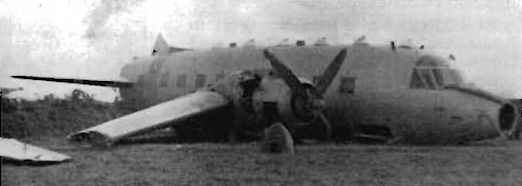Country
code
Channel Islands
Crash of a Partenavia P.68B off Guernsey: 5 killed
Date & Time:
Oct 3, 1981 at 0213 LT
Registration:
EC-DHE
Survivors:
No
Schedule:
Cardiff - Alicante
MSN:
184
YOM:
1979
Crew on board:
1
Crew fatalities:
Pax on board:
4
Pax fatalities:
Other fatalities:
Total fatalities:
5
Circumstances:
While on a night IFR flight from Cardiff to Alicante, the airplane went out of control and crashed into the sea off Guernsey Island. SAR operations were initiated but eventually suspended after few days as no trace of the aircraft nor the five occupants was found.
Probable cause:
Due to lack of evidences, the exact cause of the accident could not be determined. However, it is believed that the loss of control was the consequence of an engine failure.
Crash of a Britten-Norman BN-2A-27 Islander in Saint Peter
Date & Time:
Sep 18, 1981 at 1842 LT
Registration:
G-BDNP
Survivors:
Yes
Schedule:
Jersey - Guernesey
MSN:
496
YOM:
1976
Flight number:
JY245
Crew on board:
1
Crew fatalities:
Pax on board:
7
Pax fatalities:
Other fatalities:
Total fatalities:
0
Captain / Total hours on type:
250.00
Aircraft flight hours:
2174
Circumstances:
Jersey European Airways Flight 245 departed from Jersey Airport (JER) at 17:29 hrs UTC. This was a delayed flight since the aircraft originally allocated to the service G-BESO, had developed an engine fault shortly after takeoff and had returned to Jersey. Britten-Norman Islander G-BDNP was then made available as a replacement aircraft. The prevailing weather was a westerly wind with a cloud base of around 1,500 feet, and Flight 245 was cleared on a Special VFR flight plan to Guernsey (GCI) at a height not above 1,000 feet. When about 8 miles from the Guernsey coast the aircraft, under Guernsey Approach Radar Control, was directed to turn north towards the island of Herm as a delaying manoeuvre to allow a Partenavia, G-BFSU, inbound from the north-east to approach first. Shortly after making the turn the starboard propeller of G-BDNP began to hunt - a condition where the propeller blade angle alters in order to maintain a constant propeller RPM as the engine power fluctuates. The engine did not fail completely, so the Commander decided not to feather the propeller but requested from Air Traffic Control (ATC) a more direct approach to Guernsey Airport. This was agreed by ATC who then requested the Partenavia to carry out a right hand orbit in order to allow the Islander to approach first. Following closely behind the Islander was a Twin Otter, call sign G-BIMW. This resulted in a new landing sequence of the Islander, the Otter and then the Partenavia. The Commander of the Islander meanwhile had been trying to rectify the erratic running of the starboard engine by adjusting the carburettor heat and mixture controls, and by switching 'On' the auxiliary fuel pumps, but this did not achieve any improvement. He was, however, able to maintain 600 feet until established on a long final approach to runway 27 when the port engine suddenly lost power. As the aircraft yawed to port due to the power loss the starboard engine suddenly regained power for about one second, further accentuating the yaw. Realising that he could not now continue his approach to the airport he chose a landing site in an area of fields. He then selected the engine fuel mixture controls to 'Off' in order to prevent a sudden burst of power upsetting the approach, lowered full flap and carried out an emergency landing. The pilot stated that after touching down in one field the aircraft cleared a 6 feet high stone wall and then landed in the next field. Ground marks showed that it then travelled about 190 feet before the port main plane struck and then rode over a stone wall. This broke off the port undercarriage and deflected the aircraft to the right. It then continued through a five-bar gate, crossed a road, and came to rest in the driveway of a guest house. There was no fire and the passengers and the Commander were able to leave the aircraft through the doors and emergency windows. The Commander sustained severe laceration of his legs, broken fingers, and a head injury, but was able to assist in the evacuation of the eight passengers who had received only minor injuries. One of the passengers went immediately to the guest house and made an emergency telephone call for fire and ambulance assistance.
Probable cause:
The accident occurred because of the Commander's mismanagement of the aircraft's fuel system in that both engines failed through fuel starvation because the usable contents of the tip tanks, which were feeding the engines, became exhausted when there was ample fuel remaining in the aircraft's main tanks. Contributory factors were the Operator's procedures, inadequacies in the checklists, and the position of the fuel selector panel and switch levers in relation to the pilot's eyes.
Final Report:
Crash of a Cessna 500 Citation I in Jersey: 1 killed
Date & Time:
Oct 1, 1980 at 1902 LT
Registration:
G-BPCP
Survivors:
No
Schedule:
Cardiff - Jersey
MSN:
500-0403
YOM:
1980
Crew on board:
1
Crew fatalities:
Pax on board:
0
Pax fatalities:
Other fatalities:
Total fatalities:
1
Captain / Total hours on type:
132.00
Aircraft flight hours:
138
Circumstances:
The pilot had completed three flights previous to the accident flight on the same day. He left Jersey at 0729 hrs to fly to Coventry via Cardiff for a day of business meetings in the Midlands and to return, again via Cardiff, to Jersey in the evening. Before leaving Coventry at 1729 hrs he had filed Air Traffic Control (ATC) Flight Plans for the sectors to Cardiff and to Jersey, he also checked the weather conditions at Jersey. The conditions shown in the forecast were of poor weather with low cloud and visibility intermittently falling to 400 metres in drizzle with 7 oktas of cloud below 100 feet. The 1650 hrs weather report for Jersey was noted on the top of his copy of the flight plan, this showed: surface wind 2900 at 11 knots, visibility 6000 metres, cloud 4 oktas at 100 feet, 7 oktas at 200 feet, intermittently becoming 3000 metres visibility in drizzle with 6 oktas cloud at 100 feet. Sufficient fuel for a return flight from Jersey was on-loaded at Cardiff, the pilot remarked, to the Customs Officer, that he might have to return because of the weather at Jersey. The aircraft departed Cardiff for Jersey at 1821 hrs. It could not be established whether the pilot obtained the latest weather reports for Jersey, issued at 1720 hrs and 1750 hrs whilst at Cardiff; or if he availed himself of the in-flight weather broadcast service by London Volmet South, which transmitted the 1820 hrs Jersey weather report whilst en route. Had he done so, he would have been aware of deteriorating landing conditions because the 1820 hrs report for Jersey showed: visibility 300 metres, runway visual range (RVR) 800 metres in drizzle and 8 oktas of cloud below 200 feet. By 1842 hrs the aircraft was descending towards Jersey. The pilot was in radio contact with 'Jersey Zone' ATC, he had received his inbound clearance and had been advised of the latest weather conditions at Jersey. Radar guidance was provided by Jersey Zone, then later, by Jersey Approach Control who also advised that the RVR had fallen to 850 metres and, later, to 650 metres. On receipt of this information the pilot asked for the Guernsey weather. He was informed that the weather at Guernsey had improved to 1800 metres visibility although the cloud base was still below 100 feet. At 1857 hrs, when at 7 miles on the approach to runway 27 at Jersey, the pilot reported that he was established on the Instrument Landing System (lLS). He then contacted Jersey Tower controller who cleared G-BPCP to land. During the final stages of the approach, about 45 seconds before the crash, the Tower controller advised that the RVR had improved to 850 metres. This message was not acknowledged. The approach controller continued to observe the progress of the aircraft towards the runway on his radar screen until it was about one mile from the threshold, at which point it appeared to be on the extended centre line of the runway. The approach controller then left the radar screen and went to the window to watch for the aircraft landing. When the aircraft was half a mile from the runway, it was observed by an eyewitness to be on a normal approach path for runway 27. It was lost to view as it passed behind an adjacent house and almost immediately afterwards there was an increase in engine power. This increase was also heard by a professional pilot who was on the aerodrome, about 500 metres from the end of the runway; he said that the "engines started to spool-up as for an overshoot" and shortly afterwards he saw a flash and heard an explosion. The aircraft struck the roof of a house situated 190 metres to the north of the runway threshold centre line. The house caught fire, the tail of the aircraft lodged in the blazing roof whilst the remaining structure fell into a courtyard where it was destroyed by fire. The four persons occupying the house at the time were able to escape with minor injuries although one, a young girl, was detained in hospital with serious bums. The pilot was killed.
Probable cause:
The accident was caused by the commander failing to execute correctly a missed approach 'go-around' manoeuvre in conditions of poor visibility and low cloud at night. He failed to fly an accurate procedure and allowed the aircraft to continue to descend and turn to the right. It is probable that this resulted from incorrect instrument flying technique but partial physical incapacitation cannot be ruled out. It is also probable that spatial disorientation was a causal factor to the accident.
Final Report:
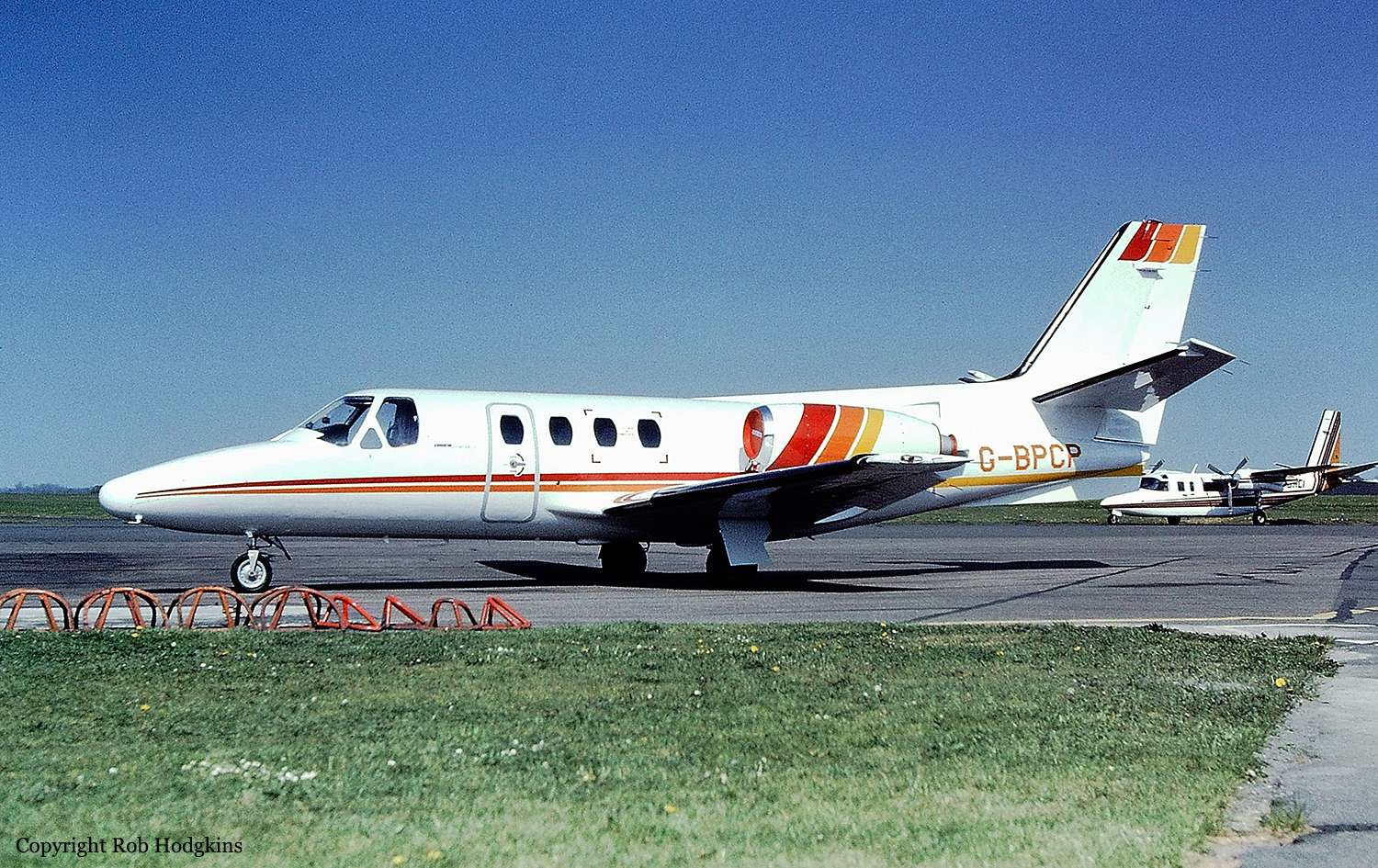
Crash of a Handley Page HPR-7 Dart Herald 203 in Jersey
Date & Time:
Dec 24, 1974 at 2018 LT
Registration:
G-BBXJ
Survivors:
Yes
Schedule:
Southampton - Saint Peter
MSN:
196
YOM:
1968
Flight number:
UK185
Crew on board:
4
Crew fatalities:
Pax on board:
49
Pax fatalities:
Other fatalities:
Total fatalities:
0
Captain / Total hours on type:
504.00
Copilot / Total hours on type:
680
Aircraft flight hours:
11781
Circumstances:
The aircraft was operating British Island Airways flight UK 185, a scheduled night passenger service from Southampton (SOU) to Guernsey (GCI). It taxied out initially at 17:49 but during the takeoff run it was noticed that the starboard engine's rpm gauge indicated 14,550 rpm instead of 15,000 and that the torque reading on the same engine was below the datum appropriate to the use of water methanol injection. The commander, who was handling the aircraft, therefore decided to abandon the takeoff when the speed had reached about 60 knots and he returned the aircraft to the apron. A ground run carried out on the starboard engine produced normal full power indications and so the passengers were re-embarked and the flight departed for the second time at 18:21. The power output from the engines during this takeoff was satisfactory but when the aircraft had reached about 200 feet a rise in the torque indication of the starboard engine was observed. Climb power was set and the flight climbed to FL80 and continued on track to Guernsey. The descent into Guernsey was started when the aircraft was about 35 nm from the airport. Power was reduced on both engines but when the fuel flow was being trimmed back the starboard engine's turbine gas temperature (TGT), torque and fuel flow gauges showed an increase in their readings and because they continued to rise the engine was shut down and the propeller feathered. Guernsey Approach Control was informed of the situation and asked to have the emergency services standing by for the landing. The aircraft continued the descent but when it was about 5 nm from the runway it was advised by ATC that the airline had requested that it should land at Jersey airport instead of Guernsey. It was therefore decided to divert to Jersey and clearance was received from ATC to proceed on course at 1,500 feet above mean sea level (amsl). The aircraft changed to the Jersey Approach Control frequency and after ensuring that ATC was aware of the emergency the commander requested permission to make an ILS approach to runway 27 although the weather at the time was clear. The commander did not consider that it was necessary to brief the co-pilot about the approach and landing to Jersey as this had already been covered during a previous approach to the airport earlier in the day and he made no special reference to the single engine approach condition. Jersey radar positioned the aircraft on the ILS localiser and it became established at a range of about 5½ nm from the runway and commenced its descent shortly afterwards. In the vicinity of the outer marker the undercarriage was lowered followed by takeoff flap (5°). ATC cleared the aircraft to land and reported the wind as 270° at 10 knots. The aircraft continued its descent flying slightly above the ILS glide path with the airspeed increasing from about 120 knots to 137 knots. Power was reduced on the port engine to a very low value and the IAS began to decay at a rate of about one knot per second. When the aircraft was between 400 and 300 feet above the runway full landing flap (30°) was selected and both pilots considered that at this stage they were correctly positioned for the approach. The co-pilot noticed that the airspeed was about 105-110 knots when he selected full flap. (The recommended speed for the final approach was 99½ knots, ie 10 knots above VATI). The aircraft became displaced to the right of the runway centre line as it approached the threshold and the commander tried to realign it with the runway by making a sidestep manoeuvre to the left. The IAS had continued to decrease at a steady rate during the final stage of the descent and that at this point it was about 89 knots. When the commander realised that he was not going to be successful in his attempt to realign the aircraft with the runway centre line he called for full power. The aircraft was now alongside the runway threshold lights. The co-pilot advanced the throttle on the port engine and believing that the commander had also called 'overshooting' he selected the undercarriage to retract. The aircraft began to yaw and roll rapidly to the right resulting in the starboard wing tip and starboard main wheels almost simultaneously striking the ground well to the right of the runway edge. The aircraft subsided on to the grass as the undercarriage retracted, spun round to the right through approximately 180° and then slid backwards until it came to rest astride a small road on the northern perimeter of the airfield. All 53 occupants were evacuated safely, four of them were slightly injured.
Probable cause:
The accident was caused by the application of asymmetric full power when there was insufficient airspeed to maintain directional control and when the aircraft was too close to the ground to allow recovery from the uncontrollable yaw and roll which developed. Other causal factors were:
- The requirement to carry out a single engine approach,
- The failure to keep the aircraft correctly aligned with the runway,
- The failure to maintain adequate airspeed during the final stages of the approach.
- The requirement to carry out a single engine approach,
- The failure to keep the aircraft correctly aligned with the runway,
- The failure to maintain adequate airspeed during the final stages of the approach.
Final Report:
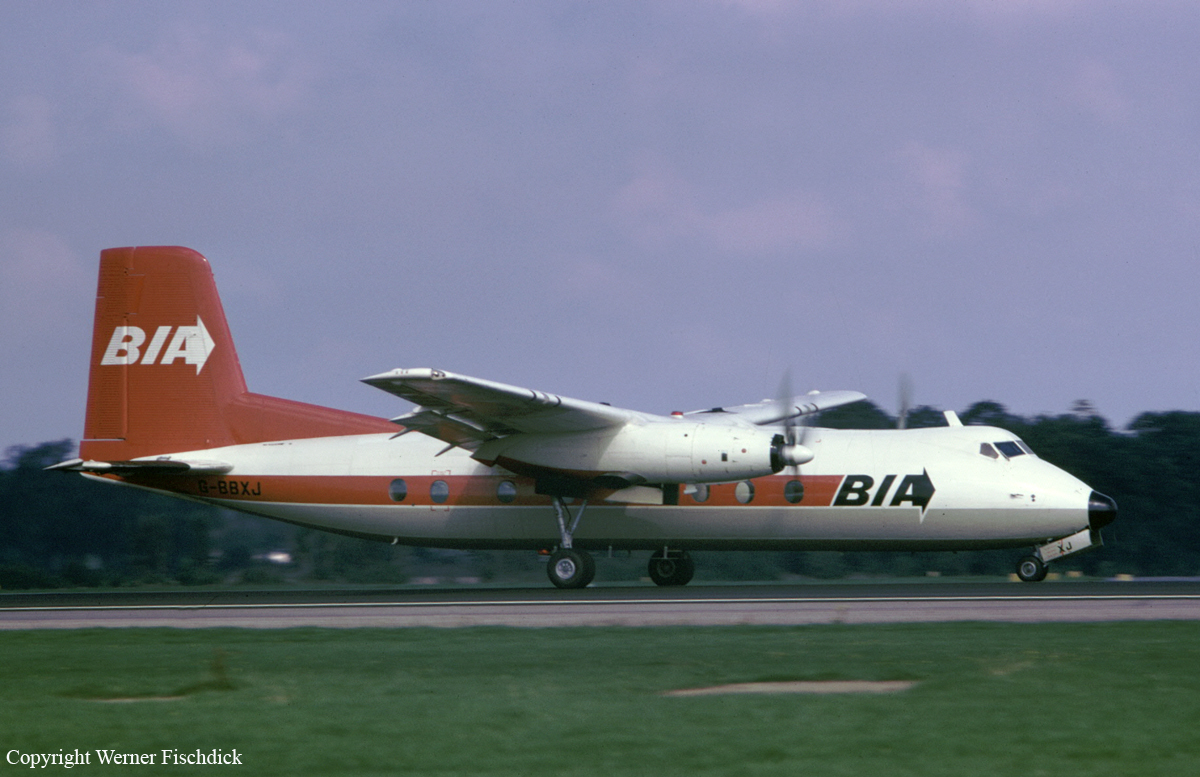
Crash of a Douglas C-47B-20-DK in Jersey: 26 killed
Date & Time:
Apr 14, 1965 at 1806 LT
Registration:
G-ANTB
Survivors:
Yes
Schedule:
Paris – Jersey
MSN:
15762/27207
YOM:
1945
Flight number:
BR1030X
Crew on board:
4
Crew fatalities:
Pax on board:
23
Pax fatalities:
Other fatalities:
Total fatalities:
26
Captain / Total hours on type:
1227.00
Copilot / Total hours on type:
730
Aircraft flight hours:
18544
Circumstances:
Flight 1030X was an extra scheduled international flight from Paris (Orly), France, to Jersey, Channel Islands. It took off from Orly at 1626 hours GMT. At 1706 hours, when about 100 miles from Jersey, the pilot made his first radio contact with Jersey zone concerning the Jersey weather. At 1742 hours he informed Jersey zone that he was descending to 1 500 ft and estimated Jersey at 1755 hours. He was then given the 1720 hours Jersey weather report, which included visibility 80 m, RVR 200 m and 818 cloud at the surface, after which the aircraft was cleared to Jersey Approach Control. In response to the approach controller's question as to his intentions concerning diversion, the pilot replied: "We'll come down the ILS and then overshoot and go to Dinard." The controller then cleared the aircraft to 1 000 ft and passed the QFE as 1 007 mb. The aircraft arrived at the Jersey beacon at 1753 hours and began an approach to runway 27, during which the guidance provided from the ILS was supplemented by distance information provided by the controller from the indications of the Decca 424 radar. The approach, the subsequent overshoot and the climb to 1 000 ft appear to have been without incident, following which the pilot informed the controller of his intention to make another approach and requested radar guidance back to the ILS outer marker. After directing the aircraft into position for a second approach to runway 27, the controller advised the pilot to take up his own headings on the ILS and informed him at 1803 hours that the aircraft was 5 miles from touchdown. Just after being given a distance of 4 miles, the pilot reported passing the outer marker and also that he was established, thus indicating that guidance was being received from the ILS and being used for the approach. Subsequent distance information was given by the controller at 1.5 mile, which was not acknowledged by the pilot, and again at 1 mile (at 1806:13 hours). Both these transmissions were clipped and are recorded as "... and a half miles now" and "... mile from touchdown". The latter transmission provoked an immediate "how many?" from the pilot, to which the controller replied by giving "three quarters of a mile now and left of the centre line." The pilot acknowledged this at 1806:24* hours with "TB" (the final two letters of the aircraft's registration). This was the last communication received from the aircraft. According to the air hostess, (the sole survivor), the flight was uneventful up to the time of the accident. She did not have any feeling of descending at any time. There was a bump which she attributed to the starboard undercarriage wheels having hit something; this was followed by a momentary roll to the right and a much greater roll back to the left. Subsequently, it was established that the aircraft had hit with its starboard wing the outermost approach light pole, which was 3 000 ft from the runway threshold, at a height 58 ft above runway level. After climbing slightly,'it rolled to an inverted attitude, at which time the starboard wing folded rearwards and separated as the aircraft dived to the ground, still inverted. It crashed at about 1806:27 hours. The stewardess survived while all 26 other occupants were killed.
Probable cause:
The aircraft struck the approach lighting when it was flown below the safe approach path during an approach to land in conditions of very low cloud and poor visibility, the pilot having disregarded the approach ban applied by his operations manual.
Final Report:
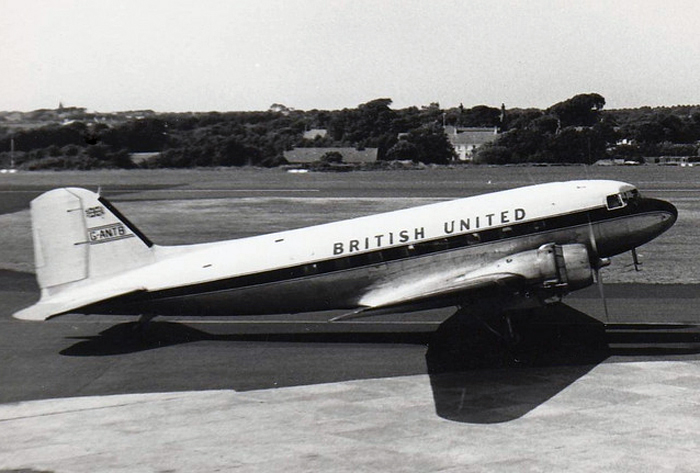
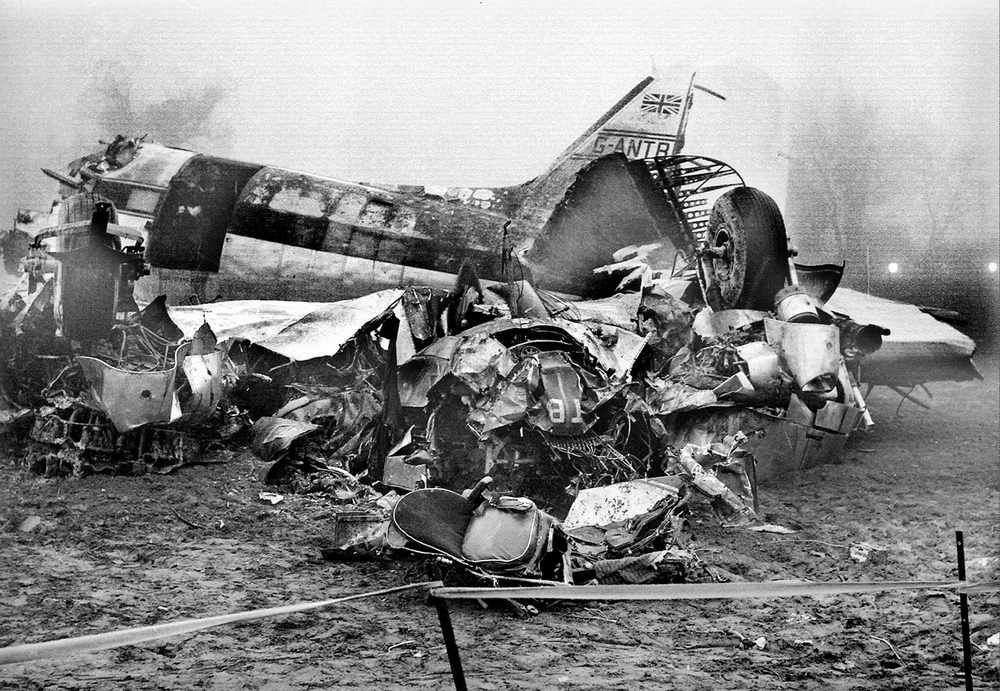
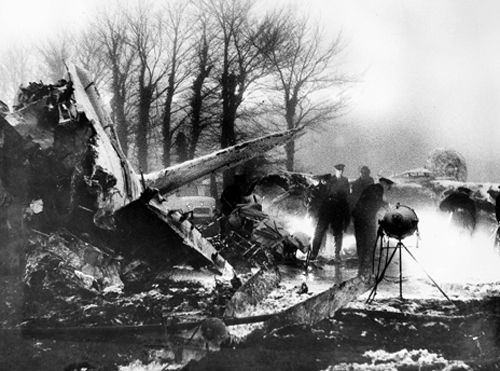
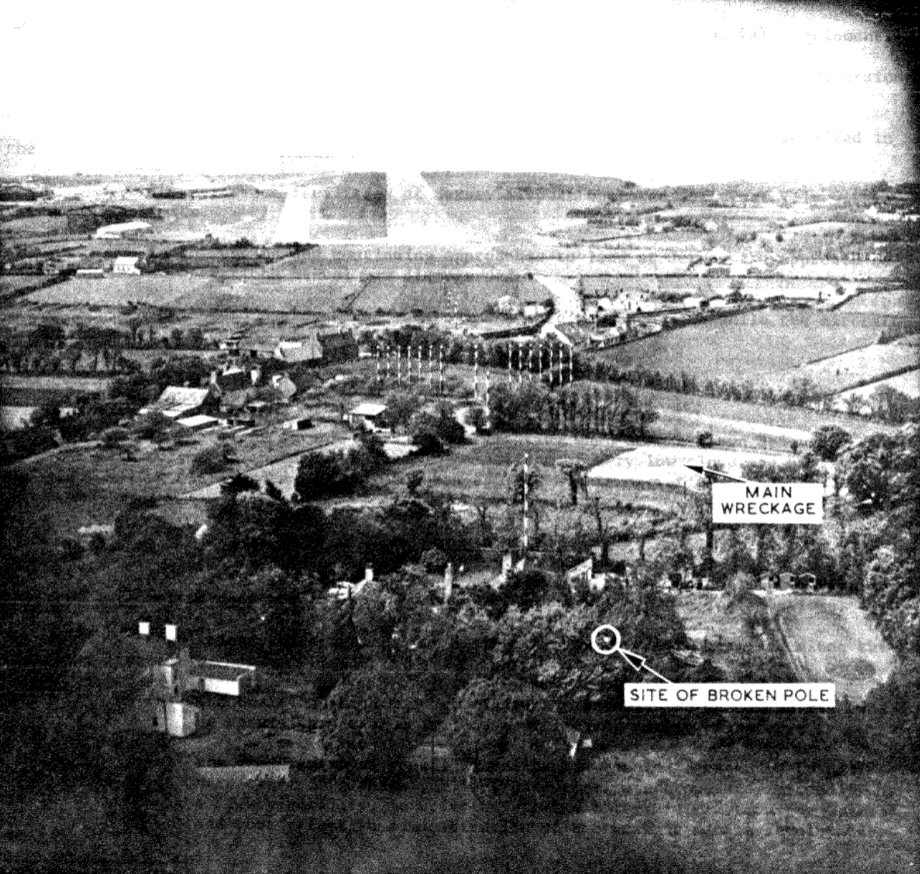
Crash of a Bristol 170 Freighter 32 in Saint Peter
Date & Time:
Sep 24, 1963 at 1123 LT
Registration:
G-AMWA
Survivors:
Yes
Schedule:
Saint Peter - Bournemouth
MSN:
13073
YOM:
1953
Crew on board:
3
Crew fatalities:
Pax on board:
1
Pax fatalities:
Other fatalities:
Total fatalities:
0
Captain / Total hours on type:
5000.00
Copilot / Total hours on type:
1600
Circumstances:
The aircraft was returning to Bournemouth from Guernsey on a passenger and vehicle service flight. The copilot was flying the aircraft from the left-hand seat, and the pilot-in-command was performing the duties of the copilot. The engines were started at 1112 hours GMT. The brakes operated satisfactorily at this time. Following a normal run-up and check of the engines and the throttles were opened slowly because of a 17 kt crosswind component. The aircraft' reached a speed of 50 kt, and the rpm of the port engine began to rise. The pilot-in-command tried to control it by moving back the propeller control lever. The rpm commenced to surge and, as the aircraft's speed was then about 4 kt less than the single-engine safety speed (84 kt), the pilot-in-command ordered the copilot to abandon the takeoff. According to the testimony of the pilot-in-command following the accident, the brakes had little or no effect, and realizing that the aircraft would overrun the runway, he pulled back both propeller pitch control levers in order to stop the engines. Shortly before reaching the end of the runway the aircraft was turned to the left to avoid the approach lights. The aircraft became airborne for about 33 yd, then passed through the boundary fence of the stopway and struck a bank surmounted by a hedge where its port landing gear collapsed. Thereafter it crossed a hedge-lined road, and the starboard landing gear was deflected rearward. Finally it slid about 60 yd on its belly and stopped near a house. The accident occurred at 1123 hours GMT.
Probable cause:
The pilot-in-command abandoned the take-off due to a malfunction of the port power unit but was unable to bring the aircraft to a stop on the runway remaining.
Final Report:
Crash of a Bristol 170 Freighter 31M in Guernsey: 2 killed
Date & Time:
Nov 1, 1961 at 1426 LT
Registration:
G-ANWL
Survivors:
Yes
Schedule:
Cherbourg – Saint Peter
MSN:
13260
YOM:
1956
Crew on board:
3
Crew fatalities:
Pax on board:
7
Pax fatalities:
Other fatalities:
Total fatalities:
2
Captain / Total hours on type:
471.00
Copilot / Total hours on type:
486
Circumstances:
The aircraft was making a daylight scheduled vehicle and passenger public transport flight from Cherbourg, France and during an attempt to land at Guernsey in conditions of low cloud the captain missed his approach. He opened up the engines to go round again, but the aircraft failed to gain height. Veering to the right it flew a short distance with the starboard propeller rotating slowly until the starboard wing struck the ground, and the aircraft cartwheeled. The passenger cabin broke away from the main wreckage which caught fire. Both pilots were killed. The steward and all 7 passengers aboard were seriously injured. The accident occurred at 1416LT.
Probable cause:
The accident was due to the malfunctioning of the automatic pitch coarsening unit of the starboard propeller. This deprived the captain of the necessary degree of control of the aircraft at a critical stage of the flight.
Final Report:
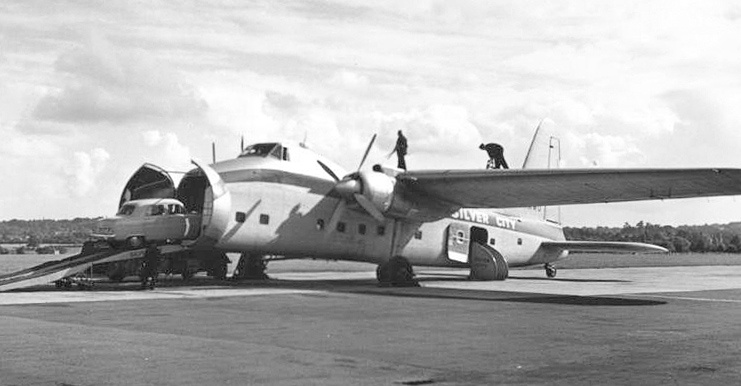
Crash of a De Havilland DH.114 Heron 1B in Saint Peter
Date & Time:
Aug 15, 1958
Registration:
G-AMYU
Survivors:
Yes
Schedule:
Saint Helier - Saint Peter
MSN:
14017
YOM:
1953
Crew on board:
1
Crew fatalities:
Pax on board:
0
Pax fatalities:
Other fatalities:
Total fatalities:
0
Circumstances:
The pilot, sole on board, was performing a cargo flight from Jersey to Guernsey with mail and foods on board. On approach, weather conditions worsened and the pilot decided to make a go around. Few minutes later, a second attempt to land was made on the opposite runway. With a tailwind component, the airplane landed on a grassy area, went out of control, lost its undercarriage and came to rest by a road. The pilot was uninjured while the aircraft was damaged beyond repair.
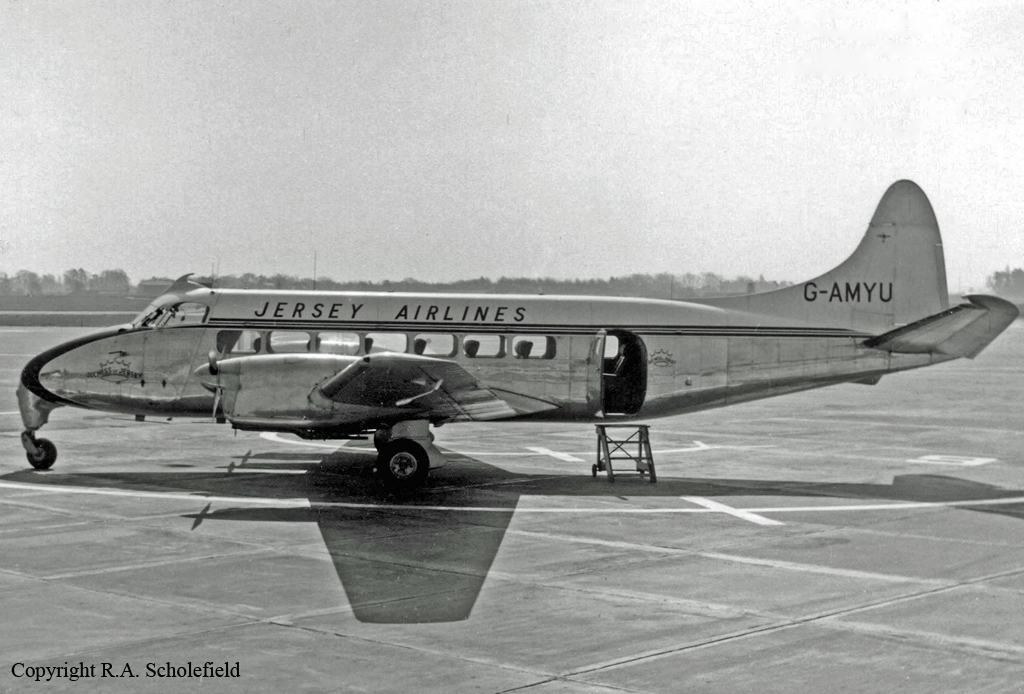
Crash of a Vickers 648 Varsity T.3 at Saint Peter
Date & Time:
Nov 2, 1957
Registration:
WJ470
Survivors:
Yes
MSN:
595
YOM:
1952
Crew on board:
0
Crew fatalities:
Pax on board:
0
Pax fatalities:
Other fatalities:
Total fatalities:
0
Circumstances:
The crew completed the landing in strong crosswinds. After touchdown, the airplane went out of control and veered off runway. It lost its undercarriage and came to rest, broken in two. There were no casualties.
